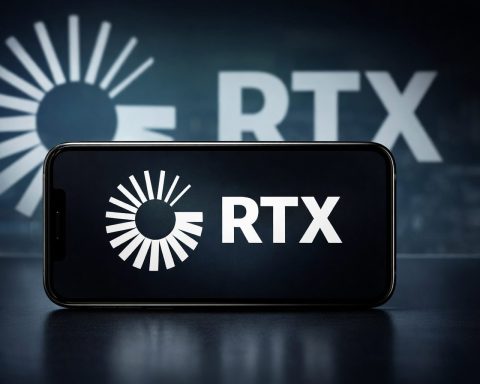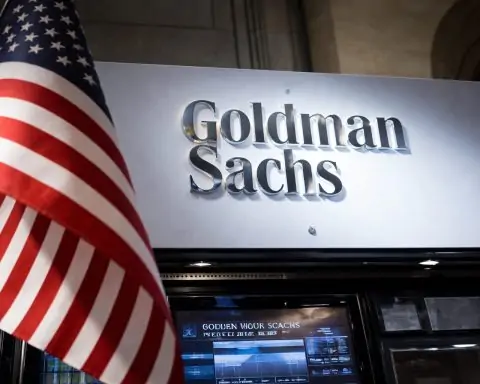- Spot gold at ~$4,118/oz (Oct 24): Gold briefly hit a record $4,381/oz on Oct. 20, then eased about 6% over the week. By Oct. 24 spot gold traded near $4,118/oz [1] [2]. Gold is still up roughly 55–57% so far in 2025 [3] [4] – its largest annual jump since the late 1970s.
- Record rally in October: In early October gold repeatedly broke above $4,000/oz, fueled by a rush into safe-havens [5]. TechStock² (ts2.tech) notes gold climbed steadily from Oct. 1–11 and ended mid-Oct up ~50–54% YTD [6] [7]. Investors and analysts say this makes 2025 the strongest year for gold since the 1970s.
- Massive ETF inflows: Investors have poured unprecedented money into gold funds. For example, SPDR Gold Shares (GLD) saw ~$35 billion of inflows by end-September – a new record [8]. World Gold Council data show roughly $64 billion poured into global gold ETFs so far in 2025 (including ~$17.3 billion in Sept) [9]. This institutional demand (along with central-bank buying) has buoyed prices even amid recent volatility.
- Fed rates and inflation: Softer U.S. inflation and the Fed’s new easing stance are a major driver. U.S. consumer prices rose only 3.0% year-over-year in September (below expectations of 3.1%) [10]. Markets are now nearly 100% priced for a 25bp Fed rate cut at the Oct. 29–30 meeting, with another cut likely in Dec [11] [12]. Lower expected rates cut the opportunity cost of holding non-yielding gold, underpinning demand.
- Global tensions and policy risks: Ongoing geopolitical and policy risks have boosted gold’s safe-haven appeal. These include the war in Ukraine, the Israel–Hamas conflict, U.S. political uncertainty (government shutdown, Fed independence debate) and renewed U.S.–China trade/tech tensions [13] [14]. Analysts note that “all the fundamental factors” driving gold higher remain in place [15]. For instance, U.S. President Trump recently sanctioned Russian oil giants and considered new tech export curbs on China [16], while investors await a Trump–Xi meeting. Such uncertainties keep investors interested in gold as a hedge.
- Dollar weakness: The U.S. dollar has slid sharply in 2025 (DXY index down ~12%), which lifts gold prices in other currencies [17] [18]. The Fed’s shift to easing has diminished the dollar’s yield advantage [19] [20], encouraging a “diversification” into gold. EBC Financial notes that a weaker dollar and lower U.S. bond yields have “aided the meteoric rise in gold,” which hit records as investors hedged policy and geopolitical risk [21].
- Mining stocks & related markets: Gold mining equities have surged in 2025. STOXX data show gold- and silver-mining stocks up ~126% this year [22]. ETFs like GDX similarly nearly doubled, reflecting gold’s run. However, miners have also been volatile: after the Oct. 20 gold peak, miners pulled back sharply (the GDX ETF fell about 9.4% on Oct. 22) [23]. Other precious metals moved with gold: silver rallied above $52/oz (a multi-year high) before a recent pullback, platinum and palladium also gained.
Gold’s rally and pullback have elicited a range of expert views. JPMorgan’s top commodity strategists say gold is their “highest conviction long,” forecasting an average price around $5,055/oz by Q4 2026 [24]. Morgan Stanley has likewise raised its 2026 gold forecast (to ~$4,400/oz) and notes that central banks and ETFs are still buying heavily [25] [26]. Goldman Sachs is more modest, predicting a roughly 6% rise by mid-2026 (about $4,000/oz) amid “strong structural demand from central banks and easing Fed policy” [27]. Meanwhile, market veterans warn that sharp rallies often see profit-taking: one trader says a $3,850/oz level may act as support if gold dips under $4,000 [28].
Overall, analysts remain broadly bullish but expect volatility. VanEck’s David Schlesser (multi-asset lead) says gold could top $5,000 in 2026 as investors seek decoupled stores of value [29]. Saxo Bank’s Ole Hansen also notes that “following a much-needed correction, traders will likely pause… before concluding the developments that drove the historic rallies… have not gone away” [30]. Bullion strategists advise that even if prices retreat, the long-term trend (fed cuts, central-bank buying, global uncertainty) still favors higher gold.
In short, gold’s price as of late Oct. 2025 reflects a balance of powerful influences: aggressive Fed easing expectations, unusually strong demand (especially from institutional and official buyers), and persistent global risks. Related markets have generally followed suit: gold ETFs and miner stocks have surged, while the U.S. dollar has weakened. Going forward, key catalysts include upcoming U.S. inflation data and the Fed’s meeting at the end of October. Whether gold can climb further — perhaps toward analyst targets in the $5,000+/oz range — will depend on how these economic and geopolitical factors play out (as well as technical trading levels).
Sources: Current prices and trends from Reuters market reports [31] [32]; expert commentary and forecasts from Reuters, Morgan Stanley, JP Morgan, Goldman Sachs, etc. [33] [34] [35] [36]; ETF and investment data from World Gold Council and industry analysis [37] [38]; macro and FX context from EBC Financial analysis [39] [40]. An analysis by TechStock² (ts2.tech) also details gold’s record-breaking early-Oct rally [41] and central-bank buying. All information is current as of Oct. 25, 2025.
References
1. www.reuters.com, 2. www.reuters.com, 3. www.reuters.com, 4. www.reuters.com, 5. ts2.tech, 6. ts2.tech, 7. ts2.tech, 8. www.reuters.com, 9. ts2.tech, 10. www.reuters.com, 11. www.reuters.com, 12. www.reuters.com, 13. ts2.tech, 14. www.reuters.com, 15. www.reuters.com, 16. www.reuters.com, 17. www.ebc.com, 18. www.ebc.com, 19. www.ebc.com, 20. www.ebc.com, 21. www.ebc.com, 22. stoxx.com, 23. economictimes.indiatimes.com, 24. www.reuters.com, 25. www.morganstanley.com, 26. www.morganstanley.com, 27. www.goldmansachs.com, 28. www.reuters.com, 29. www.reuters.com, 30. www.reuters.com, 31. www.reuters.com, 32. www.reuters.com, 33. www.reuters.com, 34. www.reuters.com, 35. www.morganstanley.com, 36. www.goldmansachs.com, 37. www.reuters.com, 38. ts2.tech, 39. www.ebc.com, 40. www.ebc.com, 41. ts2.tech










